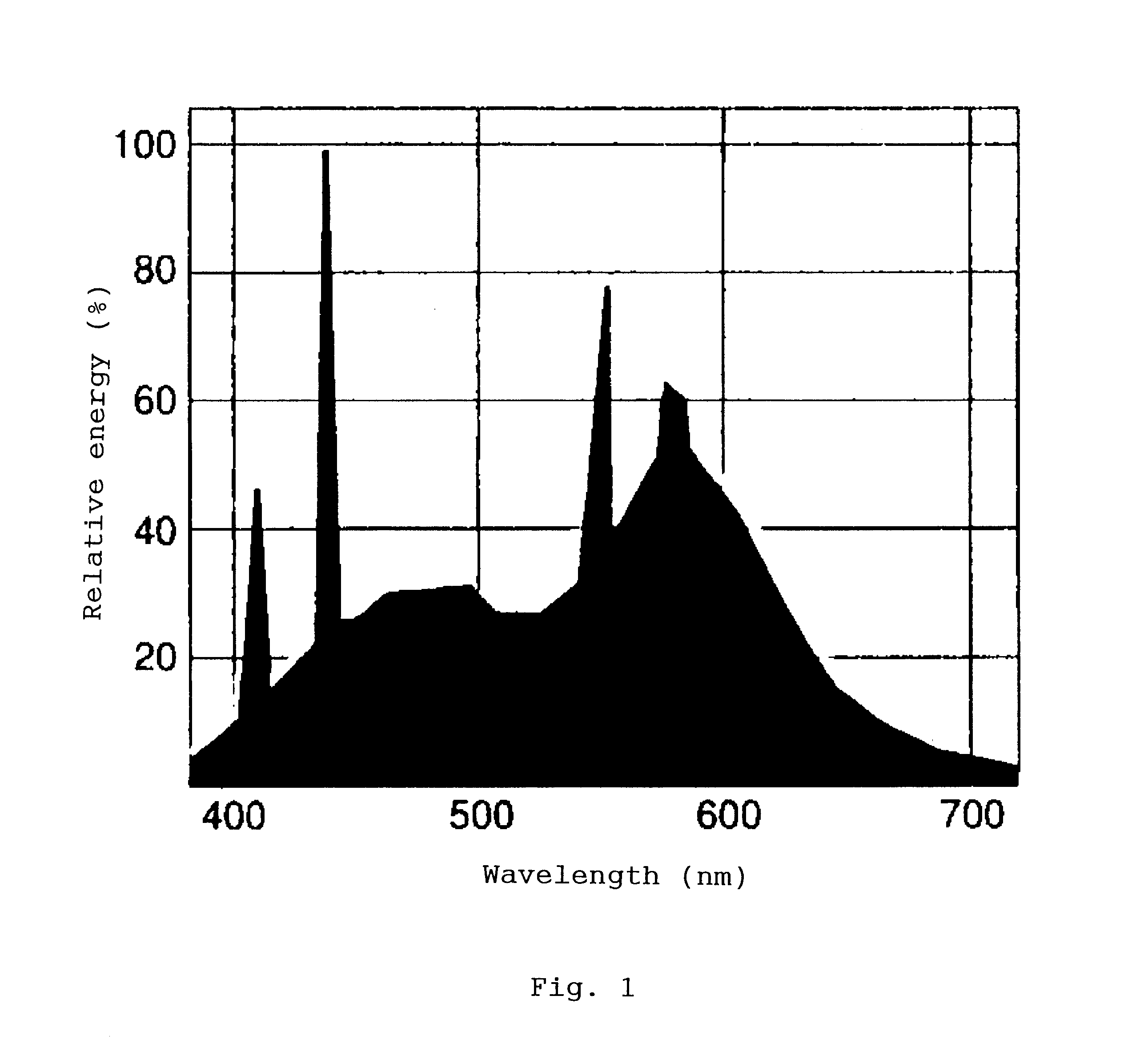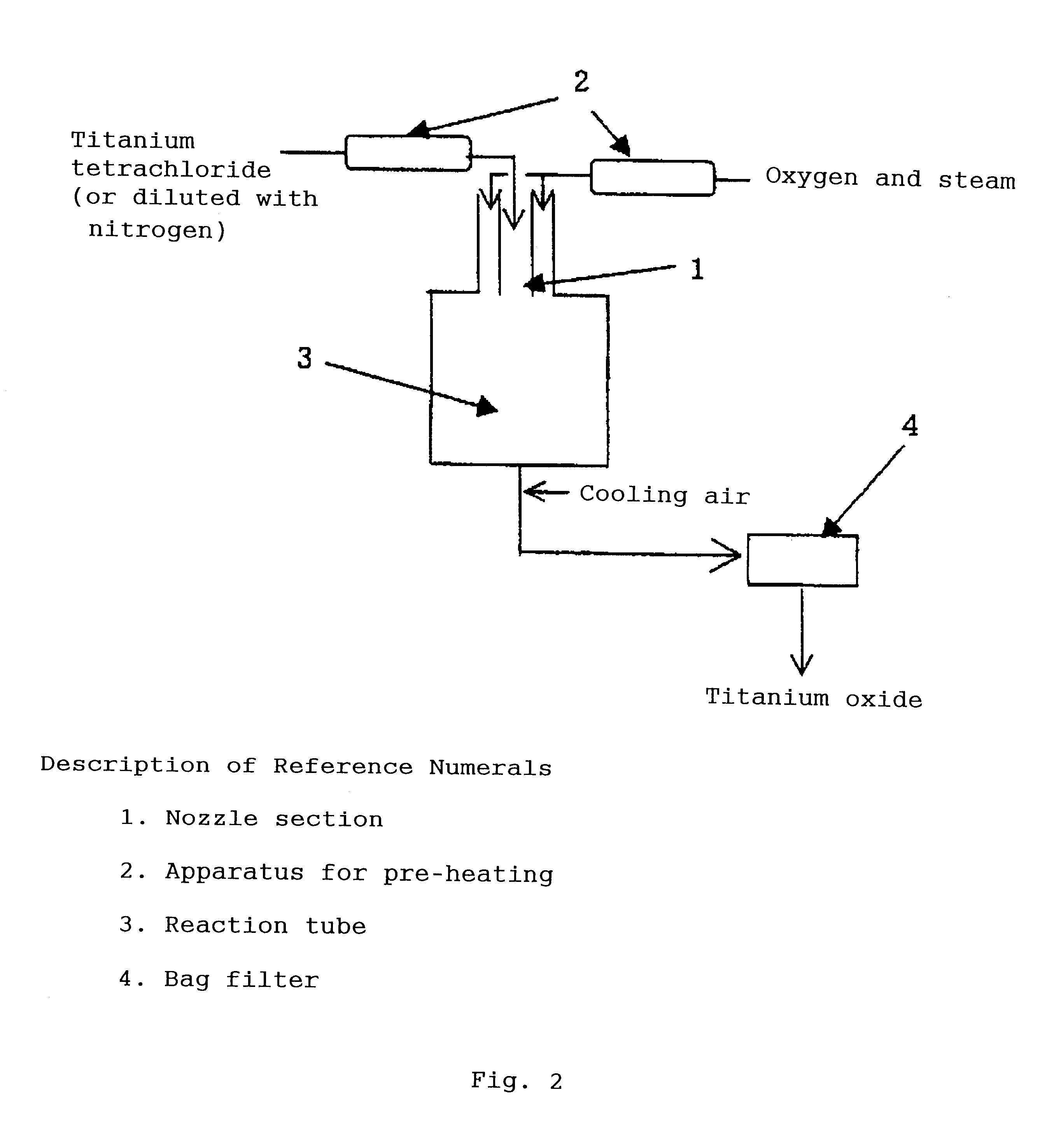Photocatalyst
a photocatalyst and catalyst technology, applied in the field of photocatalysts, can solve the problems of high cost, limited titanium oxide powder application, large size, etc., and achieve the effects of low cost, high transparency, and sufficient photocatalytic properties
- Summary
- Abstract
- Description
- Claims
- Application Information
AI Technical Summary
Benefits of technology
Problems solved by technology
Method used
Image
Examples
example 1
(Synthesis of Titanium Dioxide by Means of a Liquid Phase) Method and Surface Treatment by use of a Polybasic Acid
[0156]Pure water (50 liters) (hereinafter the term “liter(s)” will be referred to as simply “L”)—which had been weighed in advance—was heated to 98° C. with stirring and maintained at this temperature. A titanium tetrachloride aqueous solution (Ti concentration: 15 mass %) (product of Sumitomo Sitix of Amagasaki, Inc.) (3.6 kg) was added dropwise to the heated water over 120 minutes. The thus-obtained white suspension was subjected to dialysis by use of an electric dialyzer, to thereby remove chlorine and adjust the pH of the slurry to 5. A portion of the thus-obtained photocatalytic slurry was collected, and the solid content was measured by means of a dry constant weight method and found to be 2 mass %. The resultant dried powder was subjected to structure analysis by use of an X-ray diffraction apparatus. As a result, the powder was found to be of brookite-type titani...
example 2
[0171]The procedure of Example 1 was repeated, except that the calcium chloride (200 g) employed in Example 1 was changed to magnesium chloride (300 g) (for food addition, product of Naikai Salt Industries Co., Ltd.), to thereby obtain a photocatalytic slurry.
[0172]The pH of the resultant photocatalytic slurry was measured and found to be 7.7. The zeta potential of the slurry was measured by means of an electrophoresis light-scattering method by use of ELS-8000 (product of Otsuka Electronics Co., Ltd.). The isoelectric point was obtained on the basis of the thus-measured zeta potential, and was found to be 2.0.
[0173]Subsequently, a portion of the thus-obtained slurry was collected, and the solid content was measured by means of a dry constant weight method at 120° C. and found to be 11 mass %. The transmittance of the slurry as measured at a thickness (optical length) of 2 mm and a wavelength of 550 nm was 48%; i.e., the slurry exhibited excellent dispersibility. Subsequently, the r...
example 3
[0174]The procedure of Example 1 was repeated, except that the calcium chloride (200 g) employed in Example 1 was changed to ferric chloride hexahydrate (600 g) (guaranteed reagent, product of Kanto Kagaku), to thereby obtain a photocatalytic slurry. The pH of the resultant photocatalytic slurry was measured and found to be 7.7. The zeta potential of the slurry was measured by means of an electrophoresis light-scattering method by use of ELS-8000 (product of Otsuka Electronics Co., Ltd.). The isoelectric point was obtained on the basis of the thus-measured zeta potential, and was found to be 1.9.
[0175]Subsequently, a portion of the thus-obtained slurry was collected, and the solid content was measured by means of a dry constant weight method at 120° C. and found to be 11 mass %. The transmittance of the slurry as measured at a thickness (optical length) of 2 mm and a wavelength of 550 nm was 36%; i.e., the slurry exhibited excellent dispersibility. Subsequently, the resultant powder...
PUM
| Property | Measurement | Unit |
|---|---|---|
| diameter | aaaaa | aaaaa |
| diameter | aaaaa | aaaaa |
| BET specific surface area | aaaaa | aaaaa |
Abstract
Description
Claims
Application Information
 Login to View More
Login to View More - R&D
- Intellectual Property
- Life Sciences
- Materials
- Tech Scout
- Unparalleled Data Quality
- Higher Quality Content
- 60% Fewer Hallucinations
Browse by: Latest US Patents, China's latest patents, Technical Efficacy Thesaurus, Application Domain, Technology Topic, Popular Technical Reports.
© 2025 PatSnap. All rights reserved.Legal|Privacy policy|Modern Slavery Act Transparency Statement|Sitemap|About US| Contact US: help@patsnap.com


